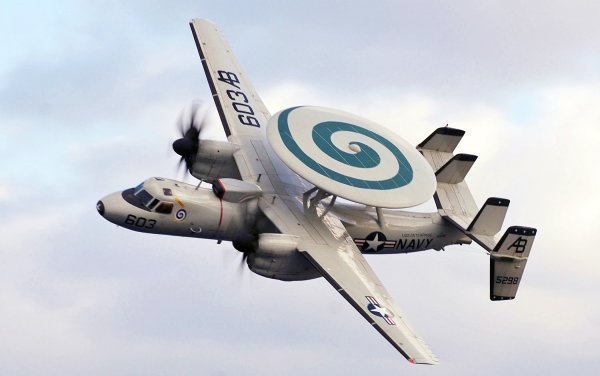

Two Navy pilots and two crew members bailed out safely from a E-2C Hawkeye Monday afternoon when it crashed in the vicinity of Wallops Island, Virginia, the Navy said in a press release.
The crew, assigned to the Airborne Command & Control Squadron (VAW) 120 Fleet Replacement Squadron on board Naval Station Norfolk, was conducting a training flight at the time of the crash, the Navy said. The plane crashed at about 3:50 p.m., though initial reports indicate no structures or people on the ground were injured or damaged.
The pilots and crew members bailed out through the aircraft’s main cabin door using parachutes, the Navy said. The crew are required to strap on parachutes when they first get aboard the plane.
The cause of the mishap is under investigation, the Navy said. It is the latest in a long series of military aviation crashes that took place this summer.
Over the weekend, two Army special operations soldiers, Staff Sgt. Vincent P. Marketta and Sgt. Tyler M. Shelton, were killed when the Black Hawk helicopter they were flying in crashed during a training mission over San Clemente Island, California.
In June, a Navy F/A-18F Super Hornet crashed into the Philippine Sea. The two aviators aboard ejected and were rescued.
Related: USS Theodore Roosevelt aviators eject safely at sea
Meanwhile, the Air Force suffered seven mishaps from May to July, two of which were fatal. 1st Lt. David Schmitz was killed when his F-16CM crashed during a June 30 training flight near Shaw Air Force Base, South Carolina; and 1st Lt. Kenneth Allen died when his F-15C went down in the North Sea on June 15.
Monday’s Hawkeye crash comes the same day the Naval Safety Center was scheduled to begin using a new online safety incident reporting system, which was meant to streamline the sharing of mishap information.
The E-2 Hawkeye is the Navy’s all-weather, carrier-based tactical battle management airborne early warning, command and control aircraft. It features a 24-foot diameter radar rotodome which helps survey the battlefield and keeps units in communication with each other.
